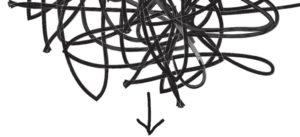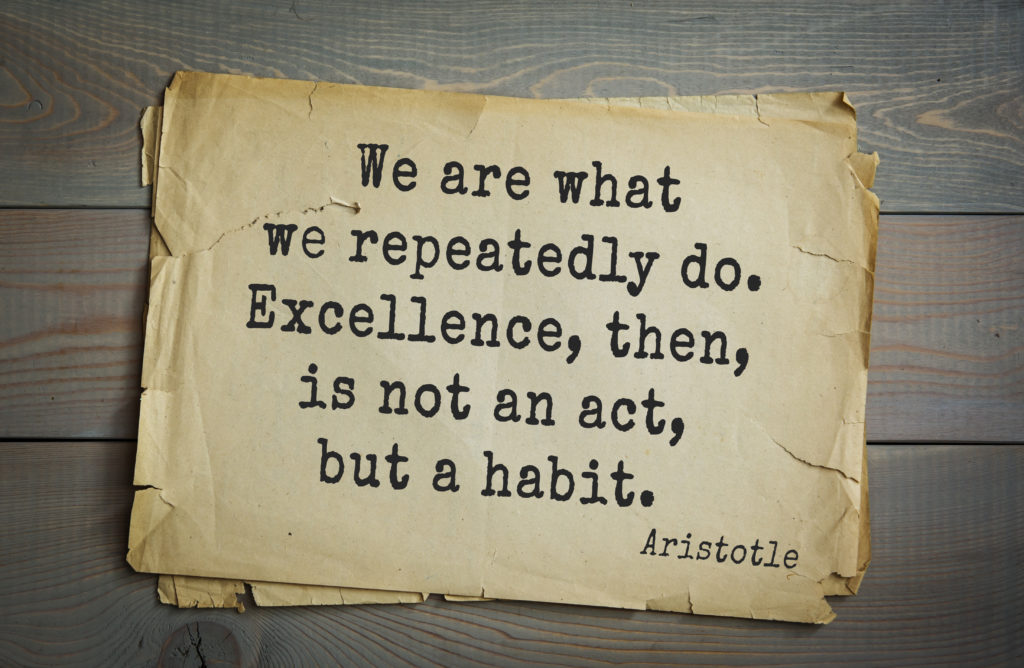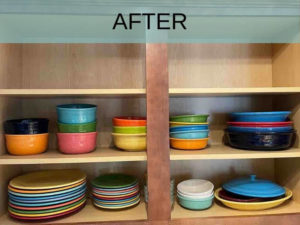Are you planning to move? You’ll want to read this because not all mover’s estimates are created equal. It is common to get a wide spread of estimates. This is why, as a professional move manager, I always recommend getting a minimum of two estimates, if you are moving locally (under 50 miles), and at least three if you are moving long distance, otherwise called an Interstate Move.
Local movers charge by the hour. They also add on the cost of materials such as boxes and other surcharges such as fuel and tolls. Their estimates tend to be simpler to read.
Interstate movers charge by weight. Materials such as boxes and labor are calculated together based on the estimated weight of your household items. Never assume a quote by phone is accurate. Whenever possible get a virtual or in-person representative to do a written estimate.
Here’s what you need to look for to compare moving costs. I always recommend you use the professional services of licensed moving and storage companies.
There are local agents for most interstate moving and storage companies in every state or city. If you are in the San Francisco Bay Area and want to see my preferred list, click here. If you call a van line’s 800 number they will likely connect you with a local agent in your zip code.
Though I’m not covering self-moving options here, if you are planning to pack and move yourself, or plan to use a freight forwarding service, or portable storage unit, sometimes called a POD, you will need a different type of estimate.
For self-moving, you may need to hire a separate company to pack and load your items on both the origin and destination ends of your move. You will also need to make sure the portable storage unit company can deliver to your address. Not all trucks can make it to rural or mountain road areas. Check first to make sure they can pick up and deliver to you!
How to read an Interstate Moving Estimate
- Confirm your name and address. Review the information for both where you are moving from and where you are moving to is correct. You don’t want your household items to go to Smith Avenue when you live on Smith Street!
- Check and confirm the dates for packing and moving are correct. A typical 3-bedroom, 2 bath home will take a day or less to pack and another day or less to wrap furniture and load. Ideally these should be consecutive days.
- Find the column that refers to the estimated weight of your household items. Most of the other associated costs will be determined by this weight estimate. If one moving company estimates a much higher or lower weight, (more than a 1,000 lb difference) you should ask your move estimator to explain. Most movers will estimate conservatively – that is a little higher than what they expect the actual weight will be.
- Review the estimated delivery range or window. Typically Interstate movers can guarantee they will get your items to you in three weeks or less. Some may be able to get it there sooner. Ask your van line driver to give you an estimated arrival date when they come to load your items. Also, be sure to exchange phone numbers with your driver in case of delays.
- Whenever possible opt for packing services. Check the estimate for how much your mover is charging for packing services. You can also opt for “unpacking” services but this means the items will only be removed from boxes and placed on available surfaces such as counters, shelves, closets. They won’t be organized for your preferences. For that, you will need to seek the services of a professional home organizing company or move management company that offers home set-up or unpacking service to you locally, such as my company in the San Francisco/Bay Area.
- Decide what type of valuation you want. By law movers have to provide a minimum of .60 per lb but I always recommend my clients opt for Full Value Protection which promises repair or replacement of any items damaged or lost in the course of the move based on a particular coverage and deductible amount. IMPORTANT: Don’t assume this applies to items you pack, otherwise known as “packed by owner” or PBO. I recommend fragile items be packed by your movers to be sure they are covered. Movers are not liable for damaged items packed by you or someone else. The only exception to this is if your homeowners insurance covers the cost of moving.
- Look for “accessorial charges” which generally means the cost of bringing in a smaller shuttle truck to transport your household items to and from your old and new homes. Movers can search your location for photos to determine if a shuttle will be needed to get your items to your front door or unloading area.
- Read the notes for extra charges! This is where you will find charges that may or may not be included in the overall estimate. For example, if you require a third party to build a crate for high value items such as art work. heavy mirrors or sculptures. There may also be extra charges for removal of items secured to the walls or ceiling such as artwork, TV mounts or appliances.
- Get the sales representative’s name, company and contact information. Contact them immediately if you have questions about your estimate. If something needs to be corrected or you plan to do any significant decluttering or downsizing prior to your move that could affect the weight, let them know, as this could lower the overall cost of your move.
- Read the total estimated charges and all the line items associated with those charges. Note if the total includes all or any of the following: Packing/Unpacking charges; Transportation Services, and the Accessorial Charges, mentioned earlier.
- Confirm with your move representative whether you are receiving a “binding,” “non-binding” or “assured price estimate.” Binding estimates can not go up but they can not go down either. You agree to pay what the estimate states. The only exception is if you change your load or unload dates which could negatively impact your final cost. A non-binding estimate will give you an idea of what it may cost you to move but it is not a guarantee of total charges. Never sign off on a non-binding estimate. Assured pricing means your estimate could come down if the actual weight or tariff – measured by the driver at a truck scale – is lower than the estimate. If this happens, you would be charged the lower of the two.
Don’t forget to ask if your moving company offers any special discounts.
- Military/first responders/Teachers
- Triple AAA members
- Members of affiliated professional associations such as NASMM or NAPO
- Senior discounts
- Free storage
- Off-season discounts
Good luck with your move! If you are in the San Francisco/Bay Area, schedule a FREE, no-obligation phone consultation with me, here.











